Let me show you 12 epic startup tips that can truly transform your business.
I’ve built 2 startups myself and coached over 50 startups – and these 12 tips are the exact ones that helped me 10x revenue, get first customers fast, and avoid dumb mistakes.
I wish I had these from day one.
And best of all, they’re actionable, proven, and you can start using them right away – no matter what industry you’re in.
Let’s get into it.
I’ve built 2 startups myself and coached over 50 startups – and these 12 tips are the exact ones that helped me 10x revenue, get first customers fast, and avoid dumb mistakes.
I wish I had these from day one.
And best of all, they’re actionable, proven, and you can start using them right away – no matter what industry you’re in.
Let’s get into it.
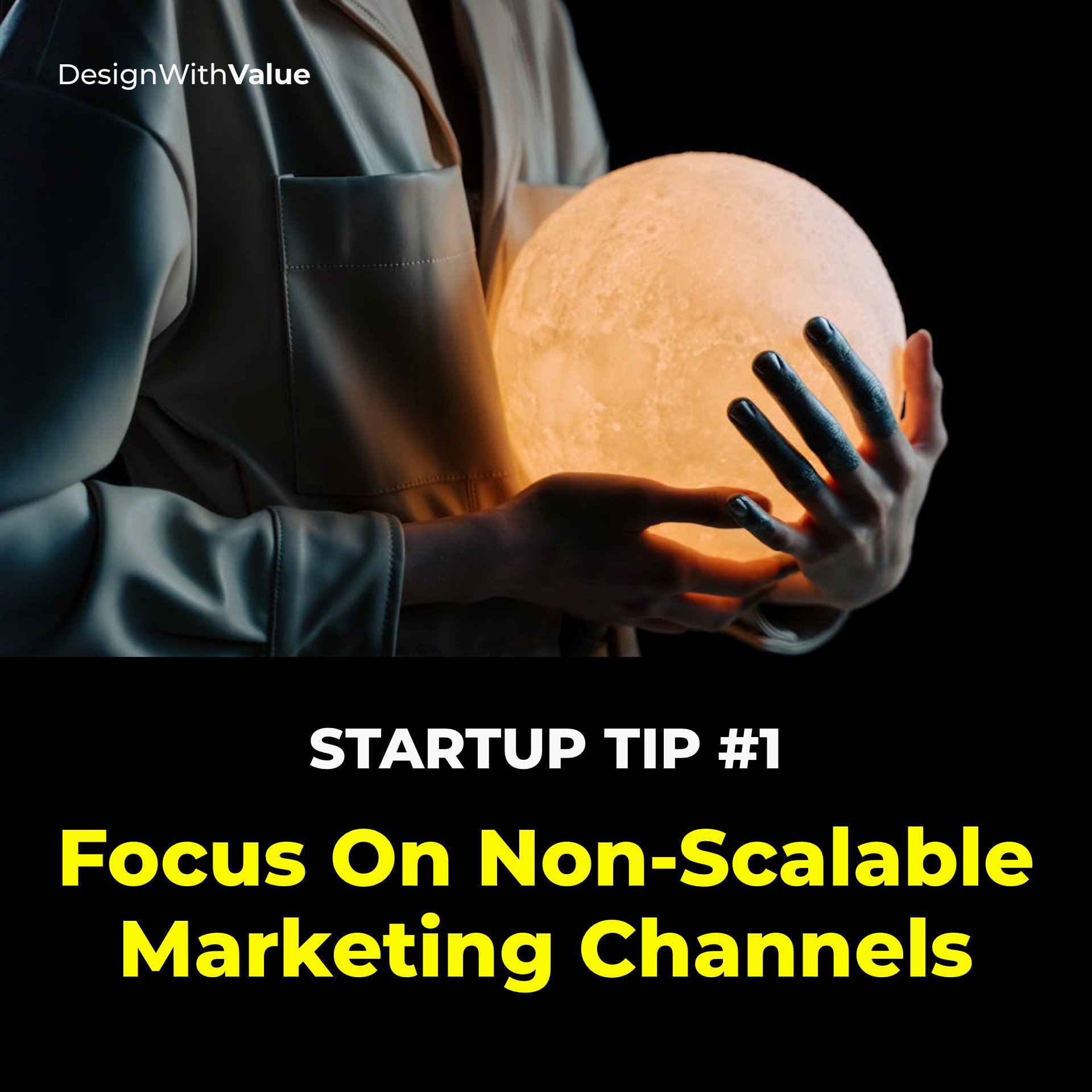
Tip 1: Focus On Non-Scalable Marketing Channels First
Alright, this one’s big. Most founders – when they want to get new customers – what's the first thing they do?
→ The run ads.
Google, Instagram, whatever.
But here is the key: Early on, that’s the wrong move.
Forget ads. Instead ...
✅ DM people
✅ Email them one by one
✅ Ask your network
✅ Call a friend
I am talking about real people, real conversations, real trust.
Is it slow? Yes.
Is it scalable? No.
But it works. That’s how you get your first 100 customers quickly. It's not by burning cash on ads, but by showing up, one person at a time.
→ The run ads.
Google, Instagram, whatever.
But here is the key: Early on, that’s the wrong move.
Forget ads. Instead ...
✅ DM people
✅ Email them one by one
✅ Ask your network
✅ Call a friend
I am talking about real people, real conversations, real trust.
Is it slow? Yes.
Is it scalable? No.
But it works. That’s how you get your first 100 customers quickly. It's not by burning cash on ads, but by showing up, one person at a time.
👉 So the key in the beginning is to focus on non-scalable, personal marketing channels first.
Later on, sure, you can go for scalable channels – but start with the stuff that doesn’t scale.
Take a moment to think about how you’re currently reaching your customers. Are there any non-scalable channels you haven’t tried yet?
If there are - try them.
Before I show you the next tip and how you can apply it to your startup, let me show you something that will help you on your startup journey - my Startup Success Bundle.
The Startup Success Bundle is perfect for you if you are looking for a step-by-step, actionable system to guide you to startup success.
Click the button below and check it out!
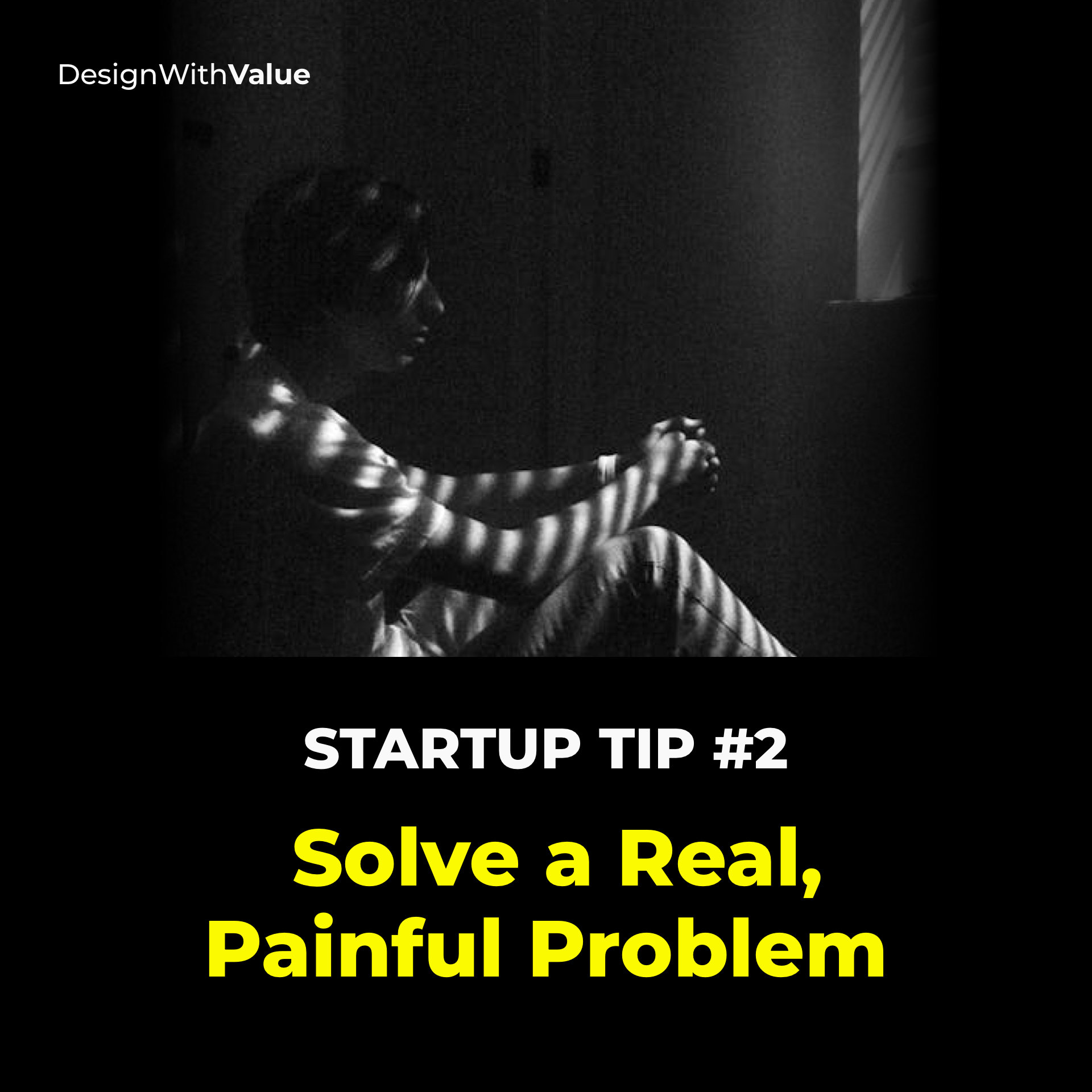
Tip 2: Solve a Painful Problem, Not a “Nice to Have”
Do you want to know the biggest mistake I made in my first startup?
Here’s a little secret: It’s the reason my startup failed. It was a hard but important lesson.
❌ People don’t buy “nice to haves.”
✅ They buy painkillers. They want a real problem solved.
I mean think about the Segway or Apple Vision Pro. They are both cool gadgets, right? But they flopped.
Why?
Because they didn't solve a clear problem.
They are just fancy.
Here’s a little secret: It’s the reason my startup failed. It was a hard but important lesson.
❌ People don’t buy “nice to haves.”
✅ They buy painkillers. They want a real problem solved.
I mean think about the Segway or Apple Vision Pro. They are both cool gadgets, right? But they flopped.
Why?
Because they didn't solve a clear problem.
They are just fancy.
👉 So your job as a founder is to solve a painful, urgent problem - not something somebody could maybe try someday.
Nail one real problem, and people will love your product and stick around.
So, take a second and think about what problem you are solving for your customers. What pain are you taking away?

Tip 3: Validate Your Idea With Real Customers, Not Surveys
When founders build their startup, most of the time it goes like this:
They send a quick survey to potential customers and ask:
"Hey, do you like this idea?"
And most of the time – they get answers like:
✅ Yes, this is super cool
✅ Great idea
✅ I would love this
So they dive straight into development. Three months later, they start their startup. And you know what happens?
→ Zero customers.
And they don't know why. I made this mistake myself.
You know what the problem is?
They send a quick survey to potential customers and ask:
"Hey, do you like this idea?"
And most of the time – they get answers like:
✅ Yes, this is super cool
✅ Great idea
✅ I would love this
So they dive straight into development. Three months later, they start their startup. And you know what happens?
→ Zero customers.
And they don't know why. I made this mistake myself.
You know what the problem is?
👉 Surveys and nice words – they mean nothing. If someone won’t pay for your product – they’re not your customers.
So the better way to validate your idea is to sell it right away.
So instead of asking:
❌ Hey, do you like this idea?
ask ...
✅ Would pay for it?
✅ How much are willing to pay for it?
And this is not only important when you build your product but also when you build new features. What I like most about it is that you can pre-sell your stuff and collect money early on and get immediate proof that people would pay for it.
That’s the best way to validate your ideas.
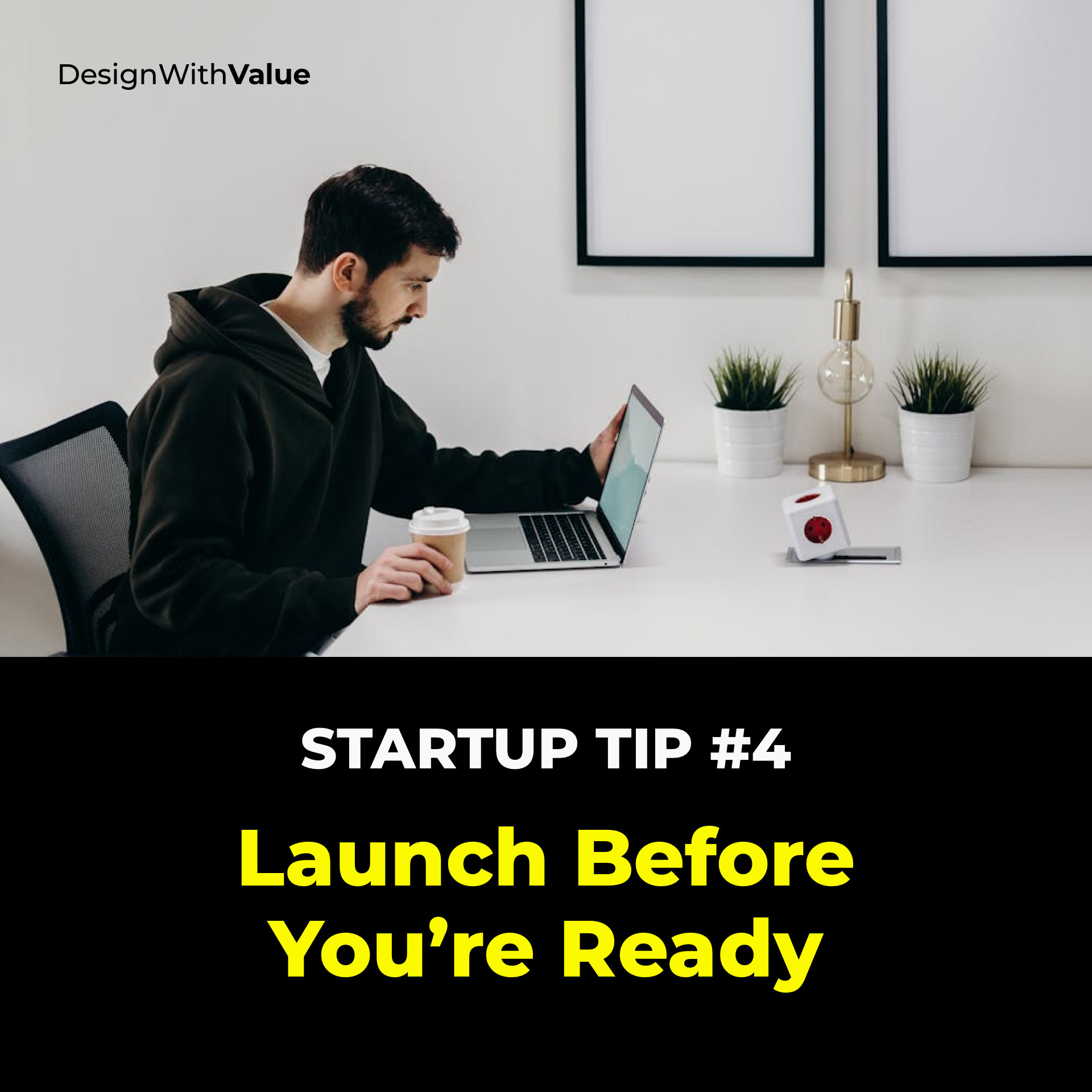
Tip 4: Launch Before You’re Ready
When I started my first startup, I wanted everything perfect.
→ It took me almost three months to launch my website.
→ Two months more for my first product.
I wanted to feel ready.
But here’s the secret - you’ll never feel ready.
So here’s a powerful tip I learned along the journey:
→ It took me almost three months to launch my website.
→ Two months more for my first product.
I wanted to feel ready.
But here’s the secret - you’ll never feel ready.
So here’s a powerful tip I learned along the journey:
👉 Always build an MVP - a minimum viable product.
An MVP is the simplest version of your product that still solves the core problem and delivers enough value that people would pay for.
It doesn’t have to be perfect, just good enough to start.

Sure, it should look trustworthy, but don’t wait for it to be polished.
Reid Hoffman nailed it – and I love this quote:
"If you are not embarrassed by the first version of your product, you’ve launched too late."
So when you’re launching your startup or when you add a new feature, ask yourself:
✅ What’s the smallest thing I can build in two weeks that still solves the problem?
Build that, launch it, and improve based on customer feedback.
That's the best way to get early traction and build your product in a way people actually want.
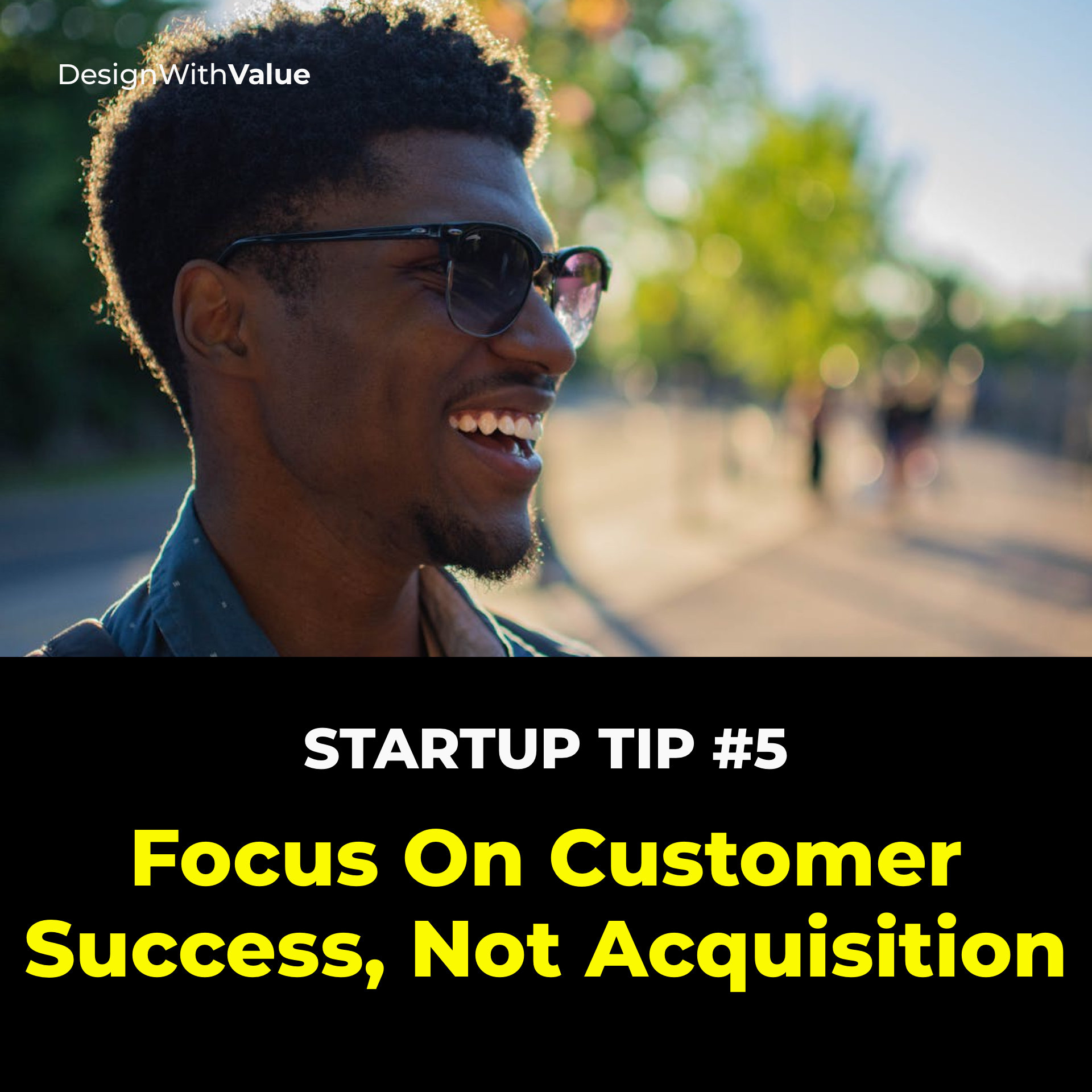
Tip 5: Focus On Customer Success, Not Acquisition
Here’s the thing: Most founders think the key to success is getting more customers. So many startups ...
✅ Get a few customers
❌ Lose a few
✅ Get a few more
❌ Lose some again
Does that feel like growth to you? No.
More like surviving, right?
So here’s the kicker:
✅ Get a few customers
❌ Lose a few
✅ Get a few more
❌ Lose some again
Does that feel like growth to you? No.
More like surviving, right?
So here’s the kicker:
👉 The most successful startups don’t focus on just getting new customers. They focus on keeping the ones they already have.
And here is the reason:
→ Getting new customers costs money and time.
You have to do ads, content marketing, outreach - it all adds up.
But keeping customers is mostly about listening and improving your product - stuff you’re already doing.
And here’s the bonus: Happy customers don’t just stick around - they tell their friends and family. So you get more customers without any extra effort.
So how do the most successful startups keep their customers?
Here’s a little secret most founders don’t even know:
✅ You need to get people to the AHA moment as fast as possible
The AHA Moment is the moment when people think:
"Ah, this is exactly what I needed."
So, when someone signs up for your product, don’t show them a long tutorial, a complicated setup, or a login screen with 12 fields.
→ Give them what they came for right away.
That’s how you keep customers.
So take a quick look at your customer flow right now. What’s one thing you can cut that’s not helping people get to that AHA moment?
Remove that.
More people will start using your product - and stick with it.
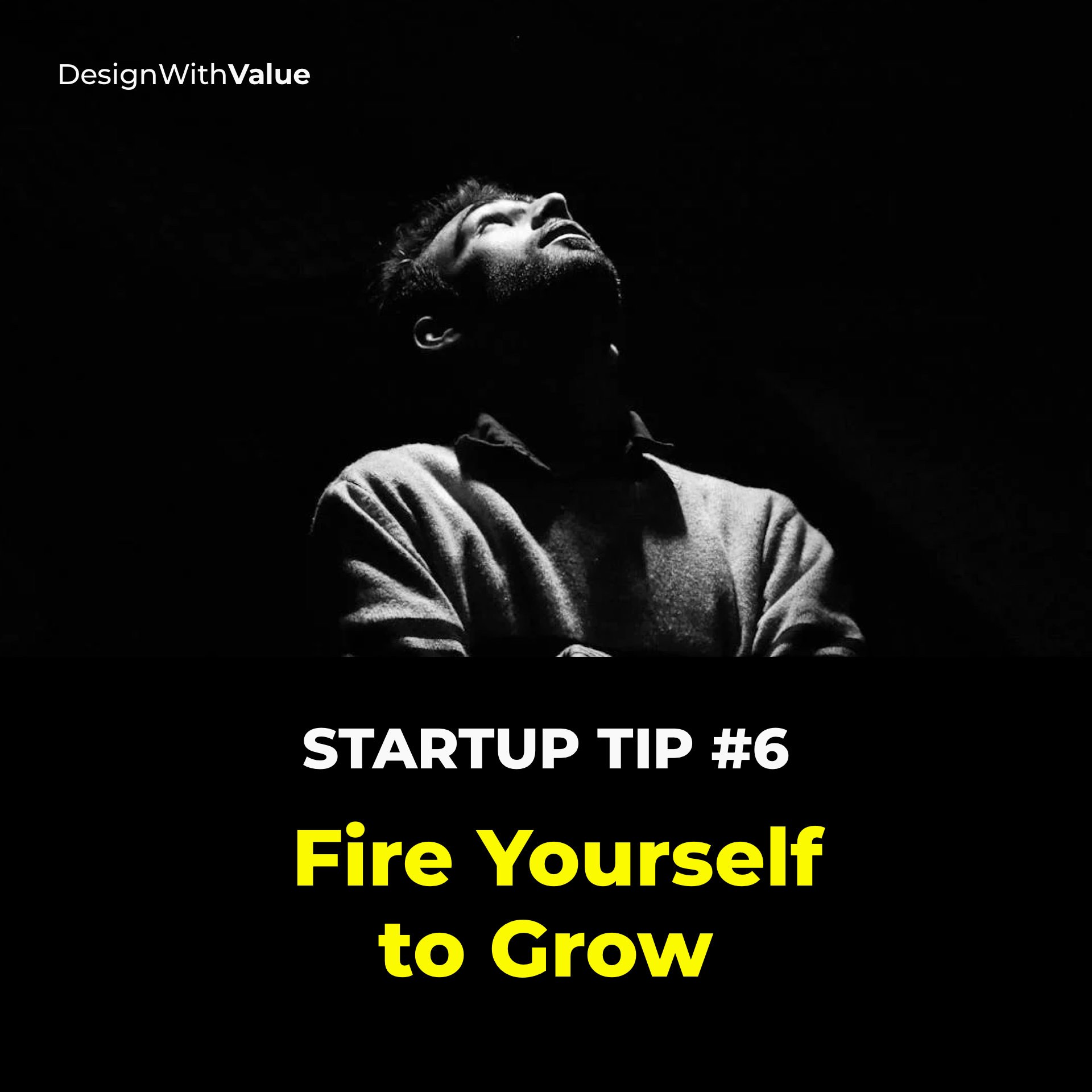
Tip 6: Fire Yourself to Grow
Here is one of the most powerful tips to grow your startup quicker:
Most founders try to do everything themselves. I made that mistake too.
I was ...
→ Building my website
→ Sending cold emails
→ Making content
→ Creating YouTube videos
Big mistake. Building a startup isn’t a sprint, it’s a marathon. And if you do everything solo, you’ll burn out fast.
So here is the secret:
👉 You need to fire yourself to grow.
So if a task doesn’t need your brain, delegate it or automate it.
You’ll not only save tons of time but more importantly, you will get space to focus on what only you can do - the big strategic moves.
So I want you to take 10 minutes, look at your calendar, and pick one task you can fire yourself from today.

Tip 7: Measure One Key Metric Obsessively
This tip might sound small, but it’s huge.
Did you know that there are over 50 metrics in the startup world?
→ Customer acquisition cost
→ Customer lifetime value
→ Conversion rate
→ Average order size
→ Likes
→ Shares
→ Impressions
The list goes on. But here’s the problem:
Most founders just throw every metric on their dashboard.
So when you look at it, you have no clue how the startup is doing. And honestly, neither do they. They’re just tracking too much stuff that doesn’t really matter.
So here’s the better way.
Did you know that there are over 50 metrics in the startup world?
→ Customer acquisition cost
→ Customer lifetime value
→ Conversion rate
→ Average order size
→ Likes
→ Shares
→ Impressions
The list goes on. But here’s the problem:
Most founders just throw every metric on their dashboard.
So when you look at it, you have no clue how the startup is doing. And honestly, neither do they. They’re just tracking too much stuff that doesn’t really matter.
So here’s the better way.
👉 First, decide what your main goal is - for example, “We want to grow revenue by 3% this year compared to last year.” Then, pick just the handful of metrics that actually move that needle - like average order size, conversion rate, or customer retention.
Forget likes and followers - those don’t pay the bills. Track only what really impacts your business, and then check your dashboard daily to see how you’re doing.
That’s how you stay focused.

Tip 8: Create Content That Educates, Not Just Sells
Wanna know what the one marketing channel I would bet my startup on?
✅ Content marketing.
Content marketing means creating valuable content that builds trust and pulls potential customers to you - like blog posts, social media posts or YouTube videos - whatever your audience wants.
To be honest, I never was a fan of cold outreach or pitching. It just kinda felt wrong for me. I’ve been doing content marketing for years now and it brings me customers regularly.
What I really love about this is that what you create today can bring customers years from now. Someone might find your YouTube video, click your site, and buy your product. Easy.
That's the reason why almost every successful startup uses content marketing. It just works.
But here’s the catch:
👉 AI can now produce blog posts and videos in minutes - so you have to find a way to stand out. Generic content won’t cut it.
So here is how the successful startups use content marketing in times of AI:
→ Instead of generic, AI-generated blog posts, they make their content super personal.
They share real stories, behind-the-scenes stuff - like what your team is working on daily. And I recommend you do the same.
I've started doing this myself: I tell stories in my content instead of just showing information that you can find everywhere else. That’s how you get people hooked.
So share what you’re learning, build trust, and watch how people start following, buying, and referring.
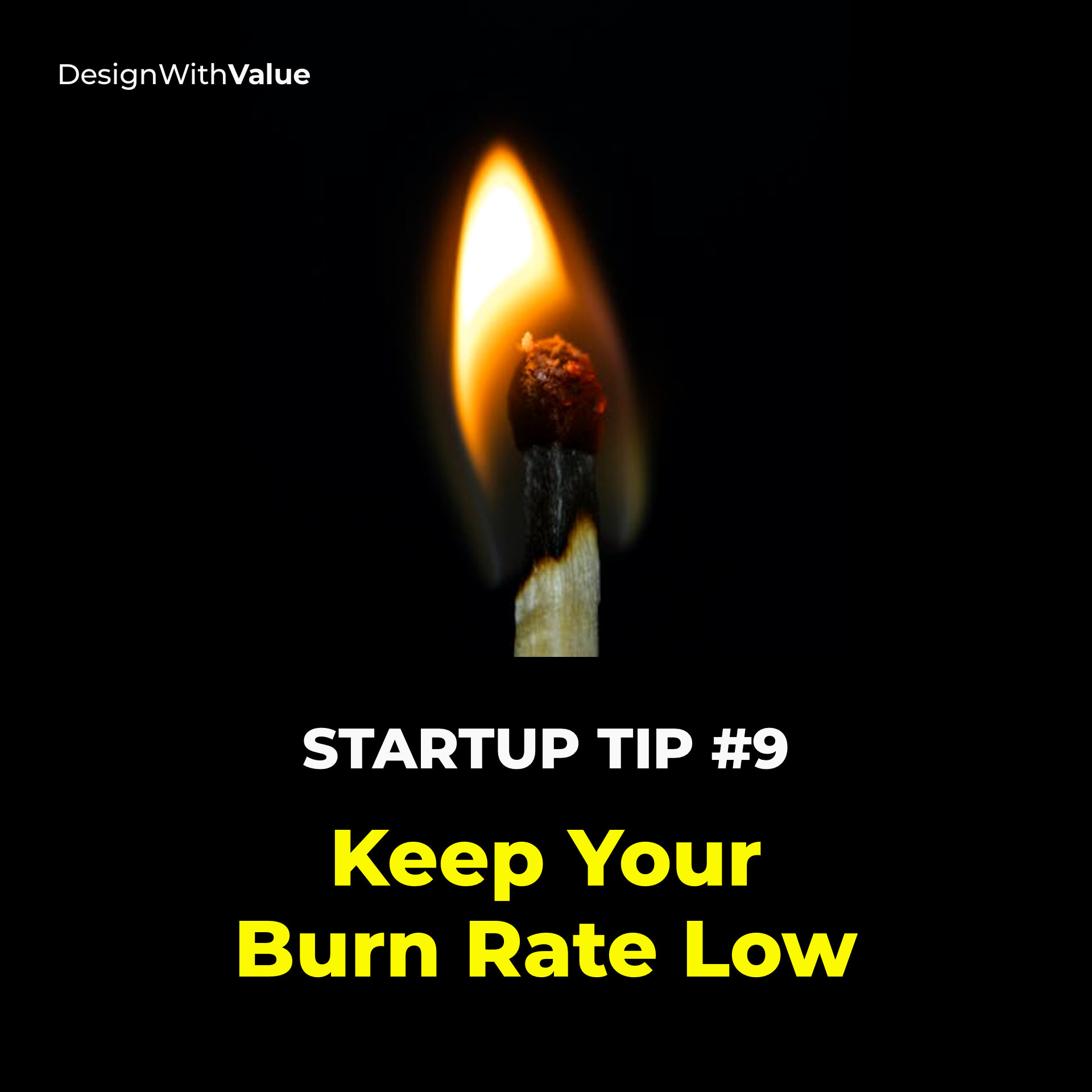
Tip 9: Keep Your Burn Rate Low
Do you know these founder types?
→ They have fancy offices, $150k cars, and expensive parties.
You know what usually happens to those startups?
❌ They go broke.
Jeff Bezos started in a garage. Zuckerberg in a dorm room.
The lesson is this:
👉 If you want to build a successful startup, you need to keep your burn rate low. You need room to mess up, to learn, and stay in the game.
Especially in the early days, your cash is limited. So you should only spend on what directly drives growth.
I invested in systems that automated my busy work and delegated tasks to people who were better at certain things. I didn't buy a fancy car or go on business vacations.
So remember this: Burn rate is the silent killer of most startups. So keep your startup lean, and you’ll survive long enough to win.
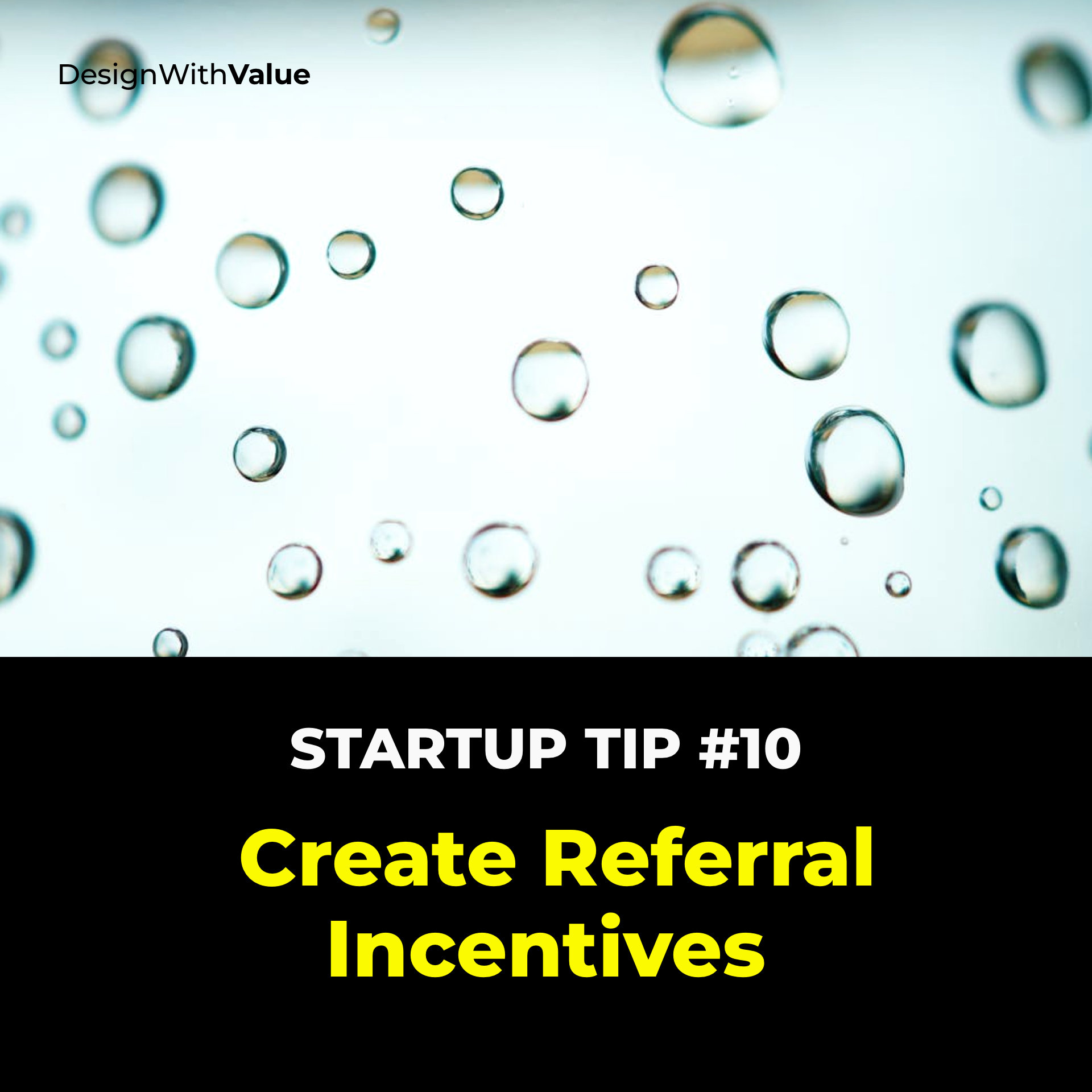
Tip 10: Create Referral Incentives
One of the most overlooked marketing channels is referrals. But it’s insanely powerful – so powerful that every startup should use it, no matter what stage you’re in.
Here’s how it works:
1. Someone uses your product
2. Likes it
3. Invites their friends or family
But here’s the key – people don’t refer others just because they like your product. You have to give them a reason.
That could be a discount, early access, or a bonus feature – anything they actually value. They get a reward, and you get a new customer for free.
Win-win.
Now here’s the pro tip to make this work:
✅ Don’t hide your referral program in some random link. Nobody will click that. Instead, bake it directly into your product.
For example, if this is your dashboard, add a small button at the top that says "Invite a friend – get a free bonus."
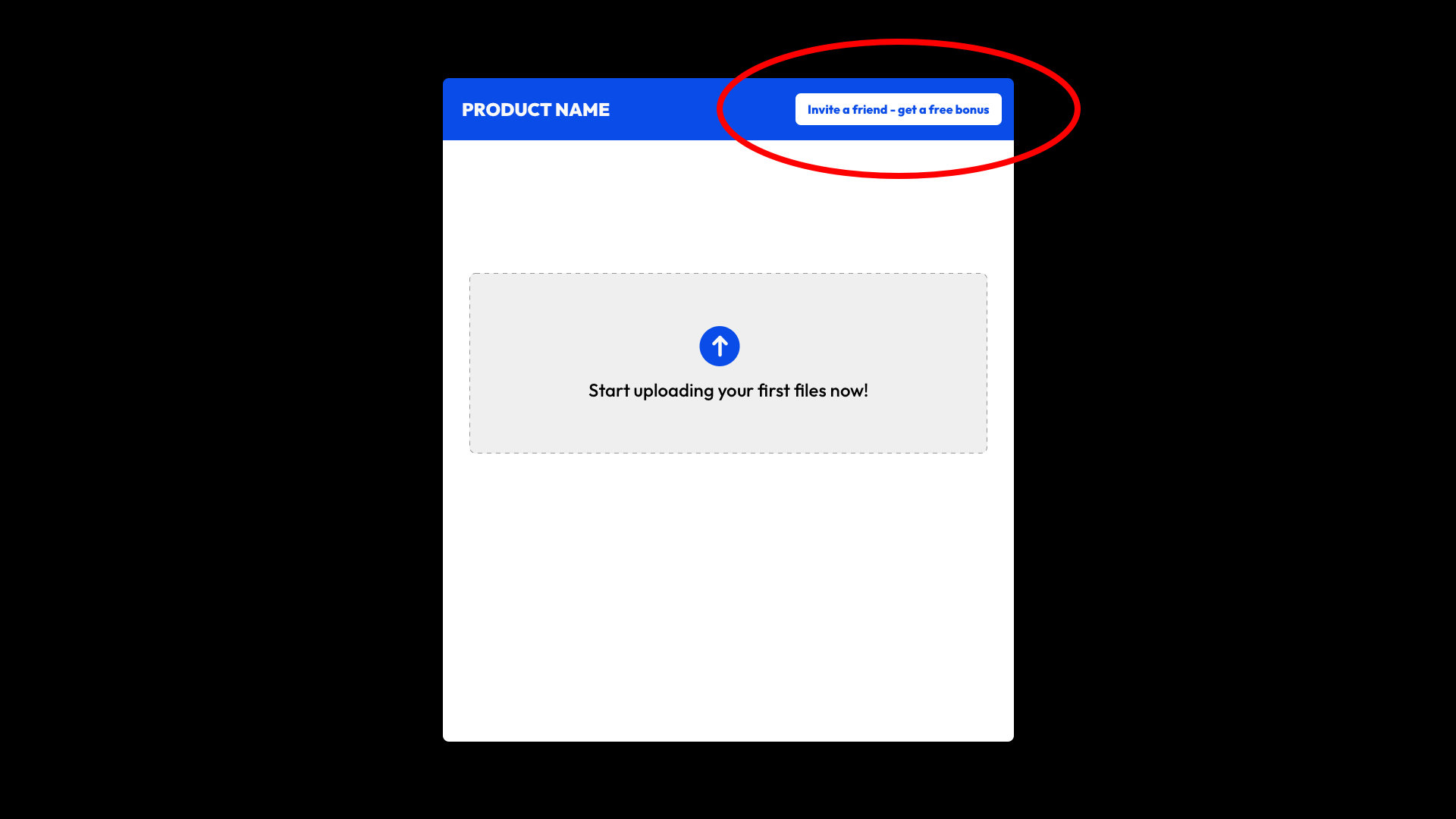
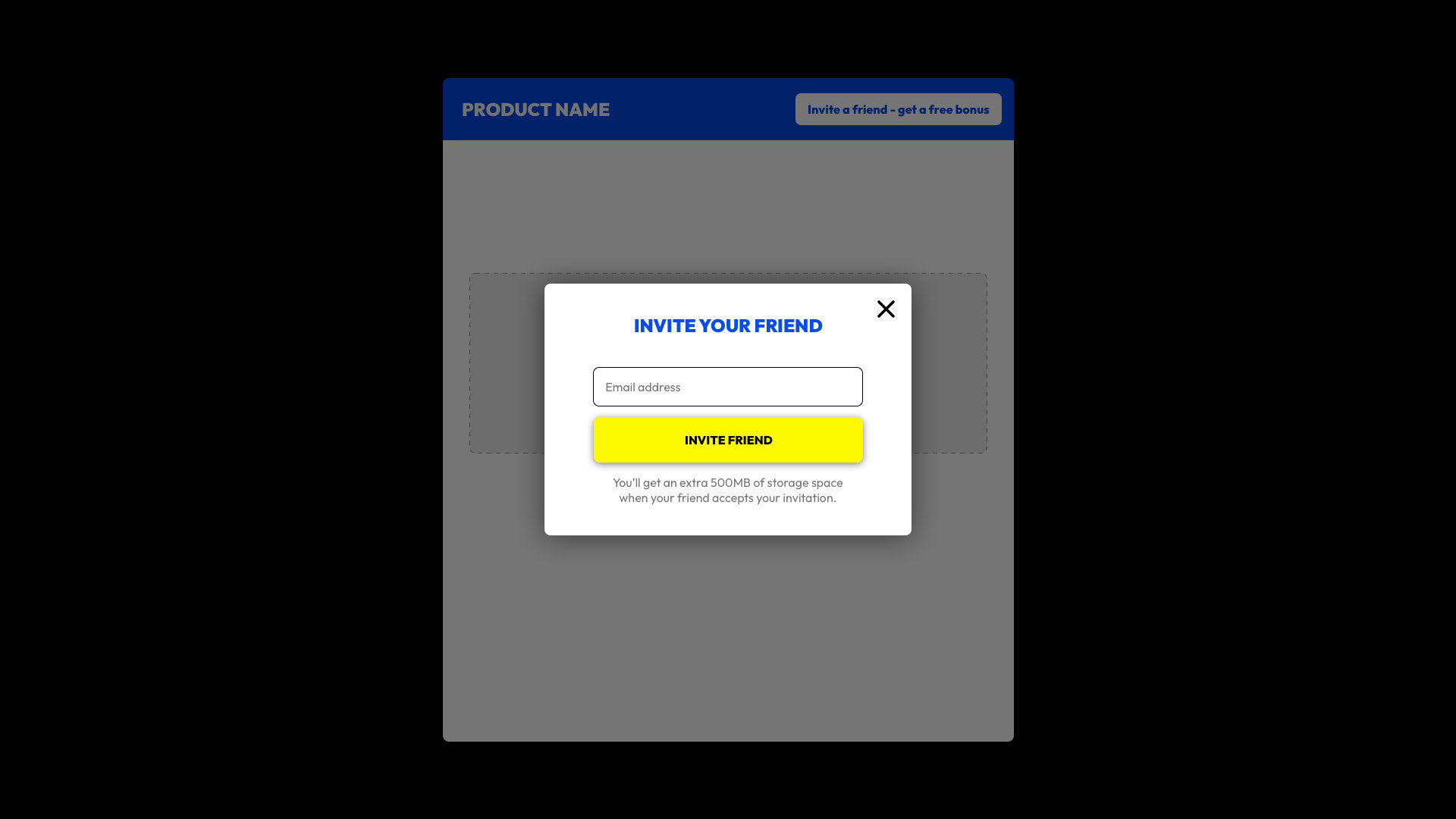
And make it super easy: they enter a friend’s email, the friend signs up, and the bonus gets unlocked.
That’s how successful startups turn their users into their best marketing channel.
That’s how successful startups turn their users into their best marketing channel.
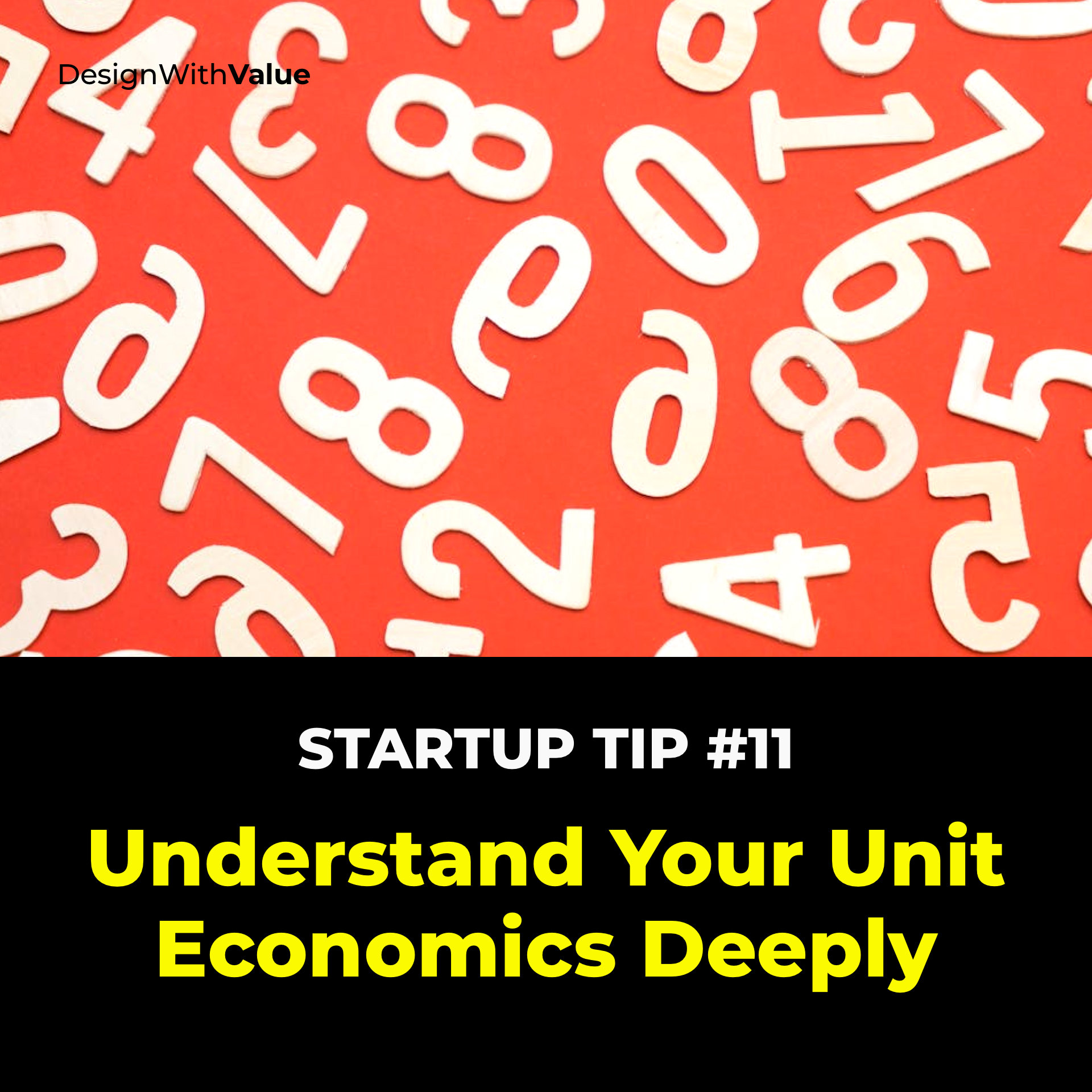
Tip 11: Understand Your Unit Economics Deeply
Let’s talk money.
What does it cost you to get a new customer?
And how much does that customer bring in?
If you don’t know these numbers, you’re flying blind. I once worked with a startup that thought they were crushing it – until we did the math.
Turned out, they were bleeding cash. Don't make that mistake.
👉 Here are two numbers every startup must know: Customer acquisition cost - how much it costs you to get a new customer and customer lifetime value - how much that customer brings.
To know if you’re on the right path, compare those two.
✅ If your LTV is at least 3x your CAC, you’re in a good spot.
〜 If it’s 1:1, you’re breaking even.
❌ If it’s worse, you’re losing money on every customer.
So burn this into your brain: CAC vs LTV.
If LTV isn’t at least 3x CAC – you’re not ready to scale.
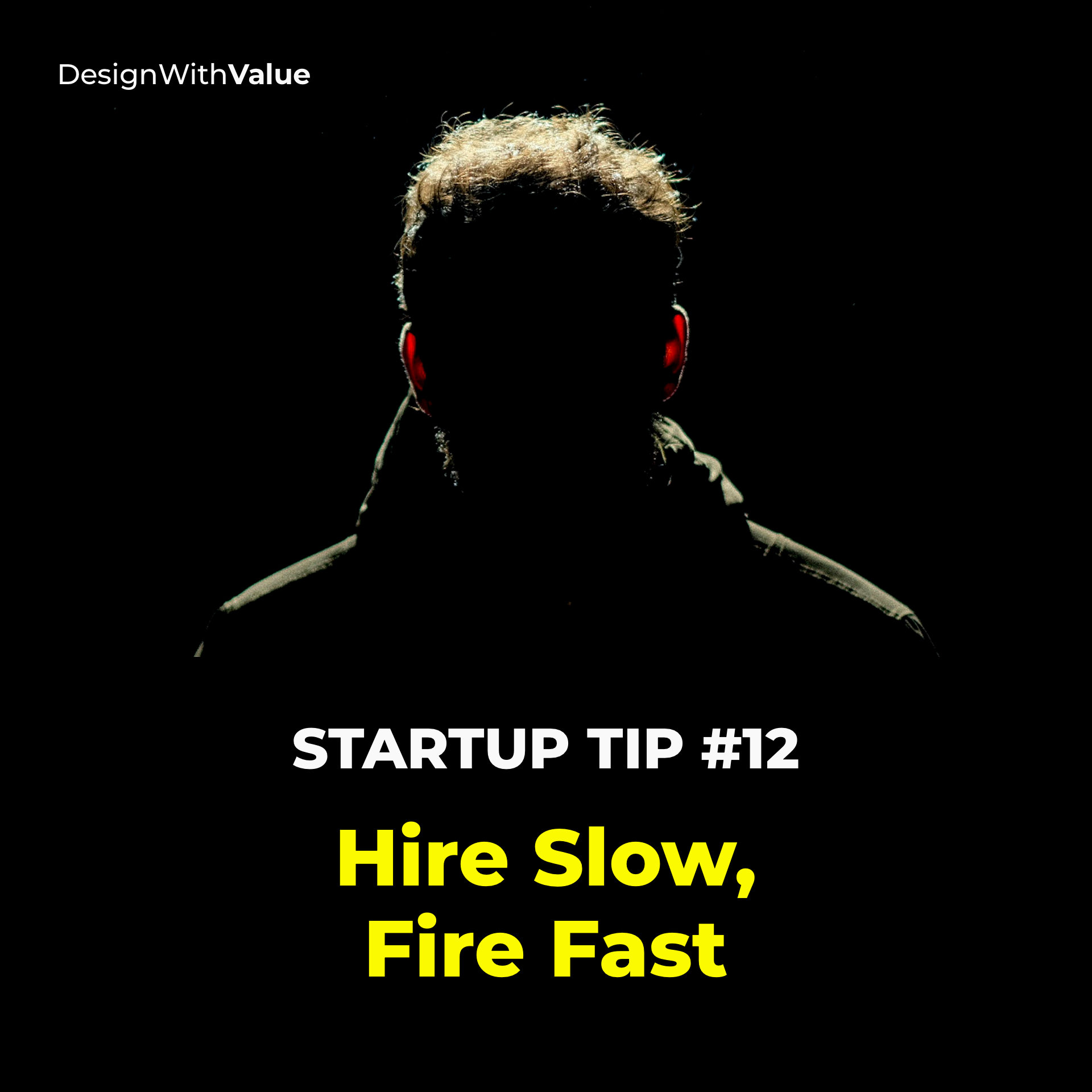
Tip 12: Hire Slow, Fire Fast
This one’s tough – and most founders only learn it the hard way. I once hired someone to help me write blog posts. At first, the content was okay. Needed a bit of editing, but fine.
A few articles in, I noticed something weird. It felt generic.
So I checked it – and guess what:
He was copy-pasting straight from ChatGPT and sending me the invoice.
At first, I gave him the benefit of the doubt. But deep down, I knew: this wasn’t going to work. I had to fire him.
So here’s the lesson:
👉 Every bad hire I’ve made, I felt it early on – and I waited too long. Don’t do that.
Hire slow and fire fast. If you want to build a successful startup, you need the right people.
So start small and test fast.
If it’s not working, cut fast.
If it is, double down.
What's next
Now you know the 12 epic startup tips that will transform your business. These are the fundamentals. The next step is to get more customers.
So how about a proven 4-step framework that’s already helped 50+ startups and billion-dollar companies build a marketing strategy to get new customers?
You can get it in my Marketing Channel Bundle. And best of all - you can achieve results in just 3 hours, thanks to smart AI prompts that guide you through every step with ease.
So click the button below and get the Marketing Channel Bundle right now!


